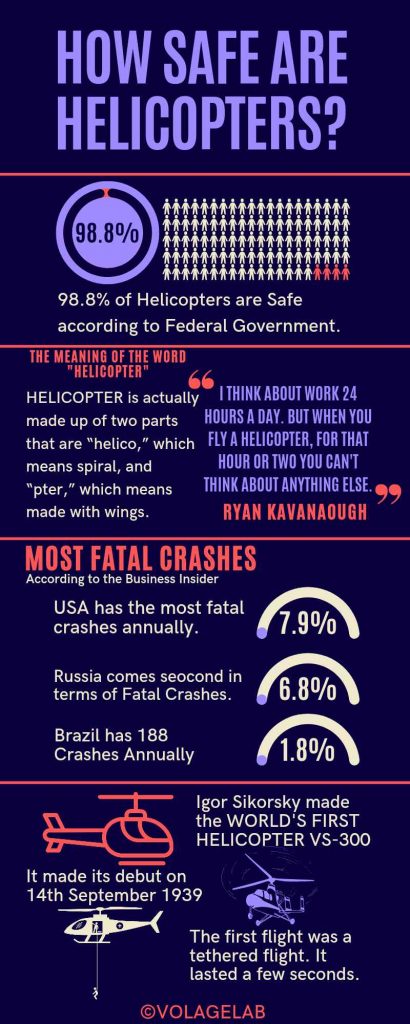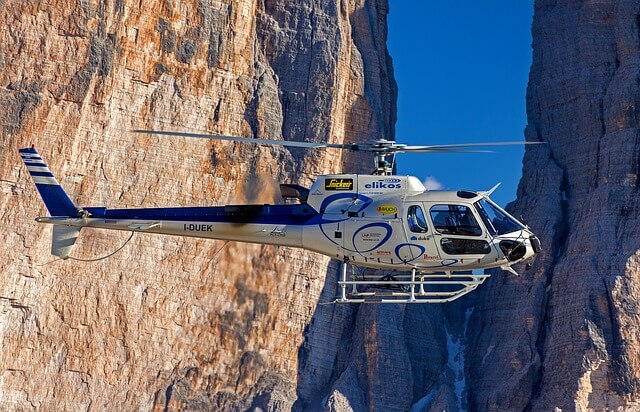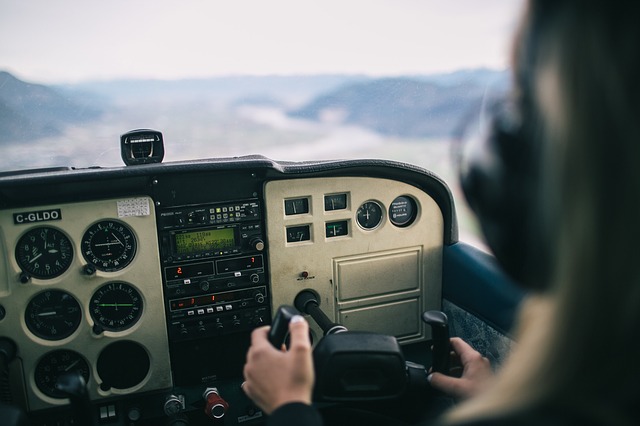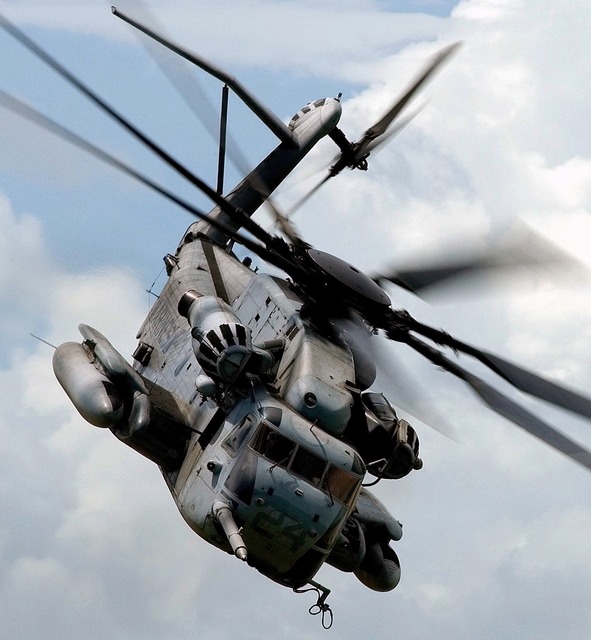Today we will explore the topic, how do pilots control a helicopter? I am sure it will be too interesting to you. So let’s dive right in.
Helicopters are the aircrafts. They are more advantageous than airplanes. Some of the reasons why helicopters are so great:
- They are able to take off and land without the need for any runway.
- It can maneuver in any direction in a 360 degree space.
This article will unveil the complexity in science behind flying a helicopter.
Moreover, you will learn all about how do pilots control a helicopter. Then you will understand why helicopter pilots are doing an incredibly complex job.

Some terms that I will dissect today are:
- Collective pitch control,
- Cyclic pitch control,
- The anti torque pedals,
- Throttle control,
- Airfoil principle.
There will also be in-depth analysis about how Helicopters can move:
- Forward
- Backward
- Sideways
- Take a turn
The Airfoil Principle and Lift Force
Helicopters use the Airfoil principle to generate lift. The Airfoil Principle:
- A streamlined shape helps in generating more lift than drag.
- A velocity difference accomplishes this pressure difference via Bernoulli’s principle.
- The resulting flow field about the airfoil has a higher average velocity on the upper surface than on the lower surface.
- When the blades rotate relative to the air the special airfoil shape will generate lift force.
- This lift force enables them to fly.
What is Drag?
The resistive force opposite to the direction of travel of an aircraft is the drag force. It is the difference in velocity between the solid object and the fluid. There must be motion between them. Zero motion results in zero drag.
How the thrust force helps the helicopter to move forward

The movement:
- The blades derive rotation from an engine (especifically a turbo shaft engine).
- The compressor sucks the air in and pressurizes it.
- Fuel burns in this pressurized and hot air.
- The hot exhaust leaves the combustion chamber.
- It passes through a series of turbine stages and makes them turn.
There are two Sets of turbines:
- One turbine set turns the compressor,
- The other set turns the helicopter’s rotor shaft.
Jet Engines of Airplanes generate thrust force. However, the primary function of the helicopter’s jet engine is to turn the rotor shaft.
The Collective Pitch Control
Collective pitch control has another name: the thrust lever. The location of it is on the left side of the pilot’s seat. The pilot operates it using his left hand. Its work is to:
- Make changes to the pitch angle of the main rotor blades.
- It does it simultaneously, or collectively, just as the name implies.
Cyclic Pitch Control
The cyclic pitch control has the following characteristics:
- Helps to tilt the tip-path plane in the direction of the desired horizontal direction.
- The cyclic controls the rotor disk tilt versus the horizon.
- This directs the rotor disk thrust.
- The pilot can then easily control the direction of travel of the helicopter.
The Anti-torque Pedal

Another name for it is the tail rotor control. Some of its functionalities:
- It controls only the tail rotor of the helicopter but not the main rotor.
- They are the only flight controls which control this rotor.
- Its location is on the cabin floor by the pilot’s feet.
- It controls the pitch, and therefore the thrust, of the tail rotor blades.
- The tail rotor also functions to control the movement of the helicopter while hovering or when making 360° turns.
Throttle Control
It usually stays in connection with the collective pitch control in order to fly the helicopter. The work by a throttle controller:
- The throttle controls the power of the engine. It stays in connection with the rotor by a transmission.
- Its setting must maintain sufficient engine power. In order to keep the rotor speed within the limits. There the rotor produces enough lift for flight.
How does a Helicopter fly in all directions?
The most challenging part in helicopter operation is its controls.
How can it fly:
- Forward
- Backward
- Sideward
- Take a turn
The answer is quite simple. The pilot needs to rotate the helicopter towards the direction he wants. The answer might be simple, but the process is very complicated. The pilot needs to do several tasks simultaneously. Only then he can achieve the necessary rotation. Let me sum up the process here:
- The force by the helicopter is not vertical when the helicopter is at an angle.
- The horizontal component of this Force makes the helicopter move in the direction the pilot wants.
- The vertical component of the blade force will balance the gravitational force.
How to turn the helicopter in the desired way?

To learn the science behind helicopter turning we need the help of the airfoil principle. We already know what it is. The greater the angle of attack the more the lift.
How about when one blade is at one angle of attack and others are at a different angle?
The lift forces acting on the blades will be different in this case. The variations in the lift forces will definitely result in a torque that can turn the helicopter.
Pilots are able to achieve such complex motion of the blades easily by a swash plate mechanism. How it works:
- The bottom Swash plate does not spin.
- It can move and tilt.
- A top swash plate can fit on the bottom swash plate via bearing.
- The top swash plate can inherit all the motion of the bottom swash plate.
- At the same time it can rotate independently.
- The top swash plate attaches to the rotor shaft with the help of a driver.
- Top swash plate will always move with the blades.
- The blades stay in connection to the top swashplate with the help of control Rods
The interesting thing about this arrangement is that just by tilting the bottom swashplate we will be able to achieve the varying Angle Criterion of the blades.
How do Pilots Control a Helicopter!
Now before going into this topic, I would recommend everyone to keep in mind all the things you learned today. Because, being a pilot is not easy. He has to learn not just these things but also many complex topics of physics. How it is so hard:
- To control a helicopter, the pilot grips the cyclic in one hand, the collective in the other.
- At the same time, his feet can not but operate the foot pedals. These pedals control the tail rotor.
- This allows the helicopter to fly in any direction on its horizontal axis.
- A pilot needs both hands and both feet to fly a helicopter.
- Minute variations in Blade Angles can cause huge variations in Helicopter Behavior.
- Often the pilot has to do two or more operations together
- The helicopter does not respond instantaneously to the inputs.
- The pilot should possess a good sense of balance and coordination
Flying a helicopter is a truly challenging task!
Conclusion
I hope you enjoyed my ultimate guide to how do pilots control a helicopter?
Now I’d like to hear from you: did you guys know how do pilots control a helicopter?
Do you want to be a Pilot? Or do you wish to learn Aeronautical Engineering? Either way, let me know by leaving a quick comment below.
Read More Exciting Articles:




